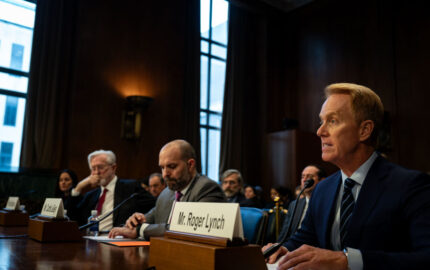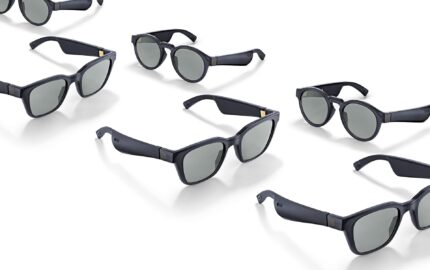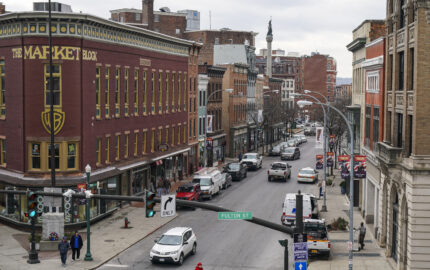
Visual Journalism
Photojournalism is changing, propelled by newsroom budget cuts, multimedia possibilities, and the ubiquity of digital images. In Visual Journalism, photojournalists write about emerging digital business strategies and their efforts to expand the reach of their photographs online and on gallery walls. They also share ideas about how to fund projects of personal passion and societal value. Their words tell vital stories about how they do their work; slideshows of their photographs—exclusive to our Web site—and multimedia presentations convey their visual stories. Read and watch as the future of photojournalism unfolds.
RELATED ARTICLE
"Multimedia Adds New Dimensions to the Art of Storytelling"
- Ed KashiIn the nearly 30 years I have worked as a photojournalist, my goals were simple. I wanted my work to appear inthe world’s most important publications, tell stories of concern to me, and try to make a difference in the world. An essential part of this process was to establish a personal vision and approach, uphold high ethical standards, and maintain the dignity of my subjects, all the while pushing the limits of the medium. What I couldn’t plan on was the near extinction of this proud profession during my lifetime. At the moment it feels like after every step I take, I look back to where I was just standing and the ground is gone. The earth is crumbling and shaking all at once.
Yet, to paraphrase something Frank Zappa said about jazz, “photojournalism is not dead, it just smells funny.” Now is actually a time of unprecedented creative opportunities for visual communicators. Photojournalism and documentary photography have never been more alive, practiced by a broader cross section of humanity in places never before regarded as having talent.
Does the public care? Do publishers care? I know Wall Street doesn’t care. But readers want powerful visual storytelling; what they don’t want is to just be shown the problems without some offering of possible solutions and some hope. After all, dreams begin with hope. Feed people gloom and not only will we lose them as readers, but we will not be working to our full potential.
The nexus of still and video fascinates me and has animated my work for nearly a decade. It began when I started shooting video in 2000. My style and method of shooting were dramatically reshaped when I started using digital still cameras. It now feels like an organic personal evolution that reflects the changing times. I shoot in more of a flow that challenges the conceit of “the decisive moment.” While Henri Cartier-Bresson’s philosophy is valid and a building block for my generation, I see that there are many decisive moments in the natural flow of a situation. What I’m doing requires a different kind of precision, one filled with more happenstance and serendipity. It is less controlled and perfect so I call this “the abandoned moment.”
I prefer not to shoot both stills and video but when necessary I am willing to alter my approach and expectations. I resent the pressure put on still photographers to abandon the unique disciplines and essential skills to be a great photographer. And one aspect of multimedia that’s been hard to accept is the need for more images, not all of which would be considered “great” photography. As I work in this new medium I do so with a willingness to change and try new approaches. My “Iraqi Kurdistan” flipbook is a dramatic and forceful example of that as I threw caution to the wind and let the images flow in nearly the exact sequence in which I’d originally shot them. When I showed this to an editor while I was assembling it, he said, “You’re going naked.” What he meant was that I was not showing my “best stuff.”
Multimedia’s Ups and Downs
The point of multimedia, especially with a project such as my Iraqi flipbook, is to challenge the canons of photography, play with the medium, utilize music and get away from the limiting hang-ups of our profession. To me, this piece exemplifies a promising marriage of stills and video. Its stream of consciousness style of shooting captures decisive moments, but it also gives viewers a sense of the scenes’ inherent movement. As a colleague who watched it said to me, “You’ve found the missing link between stills and video.”
Multimedia gives us other advantages as well. By using it, photojournalists can also integrate the voices of our subjects in ways not possible before. This is important to me. In pairing our visual work with the voices of the people whose lives we’re documenting, we can achieve a greater level of authenticity in our storytelling. Digital media also enables me to have a greater degree of authorship of my work since it allows me to control ever more of the process—from shooting the photograph to determining in what form and format it will be distributed. Not only can I more easily integrate words and images to develop my narrative, but the digital tools of dissemination give us unprecedented access to far greater audiences.
The downside of the digital marketplace is the fragmentation of audience. This is a concern for the greater good of our society, given that we no longer share experiences of media in ways we once did when there were fewer outlets. I am also concerned about image piracy and how easy it is for unscrupulous or ignorant bloggers and Web sites to appropriate my images without even giving credit, let alone offering compensation. As blogs and Web sites begin to make money, they must be prepared to pay for the use of images.
If this trend of cut-and-paste without compensation continues, how will we be able to create the images that so many people apparently want to use? This segues into the broader but related issues of fewer assignments for photojournalists, particularly for meaningful, essay-length visual storytelling and the reduction in licensing fees being offered by clients who are prepared to pay. We are being asked to do more and being paid less. Ultimately this is not sustainable.
Advocacy is playing a increasingly large role in my work. After my “Living Your Subjects” project and my Niger Delta story, I have come to see the true value in the work I create. There is something exhilarating about creating media materials that foundations, nongovernmental organizations (NGOs), educational institutions, and even corporations find useful to their advocacy efforts. I’ve had a number of instances in all areas where my work—and that of my colleagues—has been used to advocate, teach and raise awareness. This is something the established media don’t do very well.
We must be prepared to change our expectations about how our visual work will be used. No longer will a magazine’s pages be assumed to be the final destination for our images. We must think instead about having our story or set of our images resold in different markets around the world—and this includes a foundation’s Web site, an NGO’s annual report, or a charity’s external marketing. These and many more options now exist for producing, disseminating and getting compensation for meaningful, in-depth and powerful photojournalism and documentary photography.
Being open minded and opportunistic are the keys to survival in these fast-changing times.
Ed Kashi is a photojournalist, filmmaker and educator dedicated to documenting the social and political issues that define our times. His images have been published and exhibited worldwide and have been honored by Pictures of the Year International and the World Press Foundation, among others. Kashi’s editorial assignments and personal projects have generated six books.
"Multimedia Adds New Dimensions to the Art of Storytelling"
- Ed KashiIn the nearly 30 years I have worked as a photojournalist, my goals were simple. I wanted my work to appear inthe world’s most important publications, tell stories of concern to me, and try to make a difference in the world. An essential part of this process was to establish a personal vision and approach, uphold high ethical standards, and maintain the dignity of my subjects, all the while pushing the limits of the medium. What I couldn’t plan on was the near extinction of this proud profession during my lifetime. At the moment it feels like after every step I take, I look back to where I was just standing and the ground is gone. The earth is crumbling and shaking all at once.
Yet, to paraphrase something Frank Zappa said about jazz, “photojournalism is not dead, it just smells funny.” Now is actually a time of unprecedented creative opportunities for visual communicators. Photojournalism and documentary photography have never been more alive, practiced by a broader cross section of humanity in places never before regarded as having talent.
Does the public care? Do publishers care? I know Wall Street doesn’t care. But readers want powerful visual storytelling; what they don’t want is to just be shown the problems without some offering of possible solutions and some hope. After all, dreams begin with hope. Feed people gloom and not only will we lose them as readers, but we will not be working to our full potential.
The nexus of still and video fascinates me and has animated my work for nearly a decade. It began when I started shooting video in 2000. My style and method of shooting were dramatically reshaped when I started using digital still cameras. It now feels like an organic personal evolution that reflects the changing times. I shoot in more of a flow that challenges the conceit of “the decisive moment.” While Henri Cartier-Bresson’s philosophy is valid and a building block for my generation, I see that there are many decisive moments in the natural flow of a situation. What I’m doing requires a different kind of precision, one filled with more happenstance and serendipity. It is less controlled and perfect so I call this “the abandoned moment.”
I prefer not to shoot both stills and video but when necessary I am willing to alter my approach and expectations. I resent the pressure put on still photographers to abandon the unique disciplines and essential skills to be a great photographer. And one aspect of multimedia that’s been hard to accept is the need for more images, not all of which would be considered “great” photography. As I work in this new medium I do so with a willingness to change and try new approaches. My “Iraqi Kurdistan” flipbook is a dramatic and forceful example of that as I threw caution to the wind and let the images flow in nearly the exact sequence in which I’d originally shot them. When I showed this to an editor while I was assembling it, he said, “You’re going naked.” What he meant was that I was not showing my “best stuff.”
Multimedia’s Ups and Downs
The point of multimedia, especially with a project such as my Iraqi flipbook, is to challenge the canons of photography, play with the medium, utilize music and get away from the limiting hang-ups of our profession. To me, this piece exemplifies a promising marriage of stills and video. Its stream of consciousness style of shooting captures decisive moments, but it also gives viewers a sense of the scenes’ inherent movement. As a colleague who watched it said to me, “You’ve found the missing link between stills and video.”
Multimedia gives us other advantages as well. By using it, photojournalists can also integrate the voices of our subjects in ways not possible before. This is important to me. In pairing our visual work with the voices of the people whose lives we’re documenting, we can achieve a greater level of authenticity in our storytelling. Digital media also enables me to have a greater degree of authorship of my work since it allows me to control ever more of the process—from shooting the photograph to determining in what form and format it will be distributed. Not only can I more easily integrate words and images to develop my narrative, but the digital tools of dissemination give us unprecedented access to far greater audiences.
The downside of the digital marketplace is the fragmentation of audience. This is a concern for the greater good of our society, given that we no longer share experiences of media in ways we once did when there were fewer outlets. I am also concerned about image piracy and how easy it is for unscrupulous or ignorant bloggers and Web sites to appropriate my images without even giving credit, let alone offering compensation. As blogs and Web sites begin to make money, they must be prepared to pay for the use of images.
If this trend of cut-and-paste without compensation continues, how will we be able to create the images that so many people apparently want to use? This segues into the broader but related issues of fewer assignments for photojournalists, particularly for meaningful, essay-length visual storytelling and the reduction in licensing fees being offered by clients who are prepared to pay. We are being asked to do more and being paid less. Ultimately this is not sustainable.
Advocacy is playing a increasingly large role in my work. After my “Living Your Subjects” project and my Niger Delta story, I have come to see the true value in the work I create. There is something exhilarating about creating media materials that foundations, nongovernmental organizations (NGOs), educational institutions, and even corporations find useful to their advocacy efforts. I’ve had a number of instances in all areas where my work—and that of my colleagues—has been used to advocate, teach and raise awareness. This is something the established media don’t do very well.
We must be prepared to change our expectations about how our visual work will be used. No longer will a magazine’s pages be assumed to be the final destination for our images. We must think instead about having our story or set of our images resold in different markets around the world—and this includes a foundation’s Web site, an NGO’s annual report, or a charity’s external marketing. These and many more options now exist for producing, disseminating and getting compensation for meaningful, in-depth and powerful photojournalism and documentary photography.
Being open minded and opportunistic are the keys to survival in these fast-changing times.
Ed Kashi is a photojournalist, filmmaker and educator dedicated to documenting the social and political issues that define our times. His images have been published and exhibited worldwide and have been honored by Pictures of the Year International and the World Press Foundation, among others. Kashi’s editorial assignments and personal projects have generated six books.


